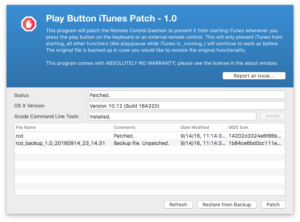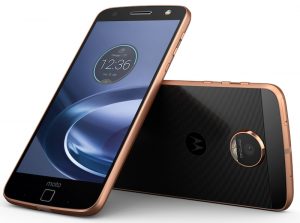SSL has been the flashy new thing lately so after realizing that https://thebitguru.com was pointing to my old Django site I decided that it was time for me to fix that and migrate all traffic to https. The first question, as you can imagine, was where to get the SSL cert.
Blog
During the course of the day I encounter lots of challenges, some of which take minutes to solve and others that take much longer. My goal for this section is to keep track of these challenges and their solutions. I will turn the longer ones into articles, while the shorter ones will stay as blog entries. You can expect topics to range from very specific programming challenges to broader topics like life.
Below is a list of the recent blog entries. You can also browse the blog by using the tags on the right side, or if you know what you are looking for then you can use the search box at the top right.
A Big Concern with IoT – Security
I am excited about the Internet of Things (IoT) phenomenon that we have been going through over the past few years. Some old timers might even bring up X10, from who knows how long ago, but for my generation, I feel like the Nest thermostat was really the intro of IoT to the mainstream. I see the value of IoT devices and I have a few IoT devices at home myself. This list has only grown over time. There are two major concerns with IoT devices that are always in the back of my mind: 1) Security, and 2) Privacy. I will focus on Security for this post.
Play Button iTunes Patch Works on macOS Sierra
 Apple will be releasing macOS Sierra this coming Tuesday, September 20th. This also means that the rcd file will be replaced with the stock version so you will have to patch it again. I upgraded one of my computers and was able to verify that the patch still works as expected.
Apple will be releasing macOS Sierra this coming Tuesday, September 20th. This also means that the rcd file will be replaced with the stock version so you will have to patch it again. I upgraded one of my computers and was able to verify that the patch still works as expected.
Read full post… “Play Button iTunes Patch Works on macOS Sierra”
Asana for Personal Task Tracking
 I have been looking for personal task tracking systems for a while. I ended up trying a few of the expected ones like simple lists in OneNote and Wunderlist. I was hoping to find something that was simple to get started with, but also had enough features to make it effective.
I have been looking for personal task tracking systems for a while. I ended up trying a few of the expected ones like simple lists in OneNote and Wunderlist. I was hoping to find something that was simple to get started with, but also had enough features to make it effective.
Website Moved to WordPress!
My migration to WordPress is complete! This post briefly talks about the history of the site and announces the go-live of the WordPress version.
Moto Z
A friend of mine, Steve, puts the durability of his cellphone screens to the test. It doesn’t take him very long to break the screen and he has consistently broken screens of pretty much every phone that he has bought. So, when I saw the Droid Turbo 2 come out with ShatterShield I suggested that he should try it out.
He decided to try it out. To test out Motorola’s claim of the durability of the screen, he has intentionally thrown it a few times in front of me. The first time that he threw it I gasped, and, surprisingly, it survived the drop. It has now been almost eight months and the screen is still in one piece and working! During this time he also bought a Galaxy S7 (work vs. personal phones) and broke its screen fairly quickly 🙂 Suffice it to say ShatterShield works.
I wasn’t impressed by the specs of the Droid Turbo 2 so I was hoping that Motorola would release another phone with better specs and ShatterSheild. Even better make it water proof. Well, two weeks ago Motorola released the Moto Z Force that has most of what I was looking for. ShatterShield, latest processor, 5.5” AMOLED screen, and large battery (3,500 mAh).
Unfortunately, the battery isn’t as big as I had hoped, especially when the Galaxy S7 has a 3,600 mAh battery for the same screen size. It’s also not water resistant like the S7, but the Moto Z has ShatterShield, which I feel is way more important than water resistance.
The other highlighted feature of the Moto Z is the ability to add on the Moto Mods. Honestly, LG came out with their “Friend Devices” for the G5, but it’s hard to see these one-off, vendor-specific add-on modules getting much adoption to really excited about them. It needs to be a standard that multiple vendors support.
I am ready to pull the trigger and get the Moto Z, but Motorola needs to hurry up. Otherwise, we will start hearing rumors about the next generation of Nexus phones and I might just end up waiting for those to come out!
Testing Fax Machine
I recently had to help someone setup an HP fax machine. Previously I would have looked around for someone with a fax machine so I could test out both the sending and the receiving functionality, but as I was reading through the manual I noticed that HP actually has a service that you can use!
You basically send a fax to this number and after five minutes it responds back with another fax to the same number with confirmation that it received the fax. This is a great tool if you ever have to setup a fax machine. Checkout more info on this HP support page.
psycopg2 on El Capitan
2015-11-22: Actually, looks like I was wrong. /usr/local is NOT protected by System Integrity Protection. I am leaving this post here just for reference, but your user should be able to overwrite and change files in /usr/local. To fix the original issue run: brew link --overwrite postgresql
OS X El Capitan introduced System Integrity Protection (SIP) that broke a lot of programs which required system level changes. If you do any type of postgresql development and use homebrew then likely /usr/local/lib/libpq.5.dylib is outdated. This could result in errors like the one below…
Quick Update – Play Button iTunes Patch
OS X El Capitan has been released, and my iTunes Play Button Patch is not compatible with it because of the new System Integrity Protection (SIP) that restricts any user (even root user) from modifying any system files. You can get around this by temporarily disabling SIP, applying the patch and then re-enabling SIP. I feel like this is not a good solution because it is cumbersome and it will likely have to be redone every time iTunes is updated (something needed by the existing method as well).
So, what’s the alternative? I have used Vox music player on and off, and I noticed that it has a preference pane which works with El Capitan and accomplishes the same goal with a different approach. I believe they use a background service that listens for the key and handles it, if configured. I feel like that’s a better approach to this problem and properly deals with the SIP restrictions that Apple has added to OS X El Capitan.
I am new to OS X service programming so I am going to research and see if I can learn about it to address this need. This will likely also address the enhancement request that many folks have submitted to allow control from other devices.
New Article – Migrating a Linode VM to a Parallels VM
I recently had the need for migrating a Linode virtual machine to a local Parallels virtual machine. After spending a lot of time searching around I didn’t find a guide that documented all the necessary steps. So, here is my attempt at documenting all the steps.



